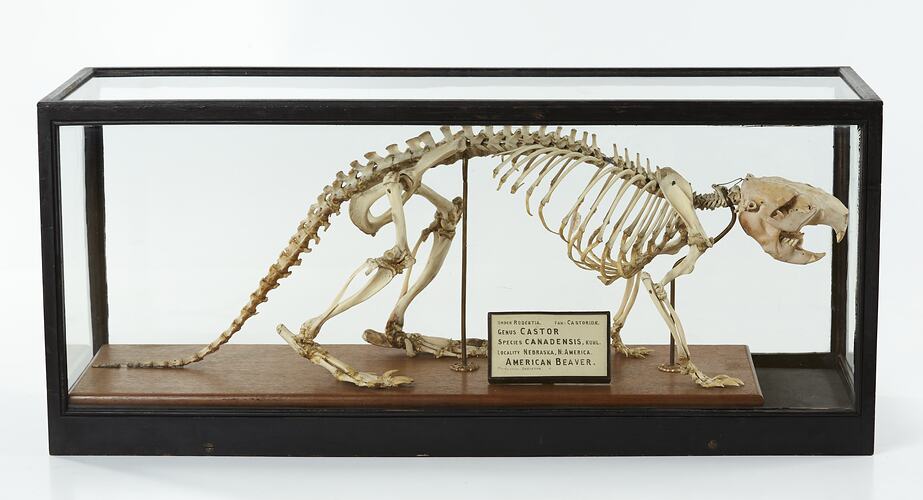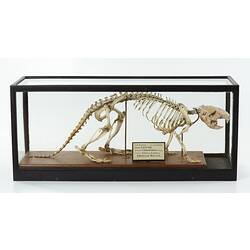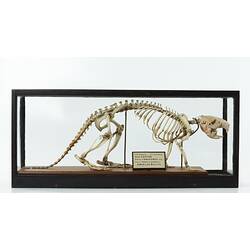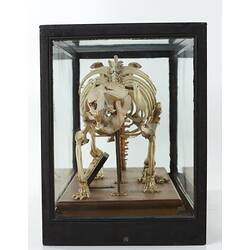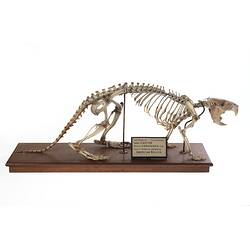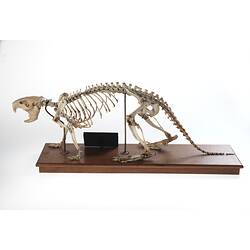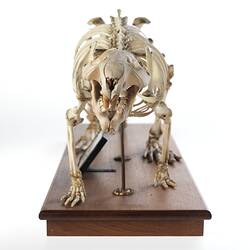Summary
The American, or Canadian, Beaver is one of two beaver species, the other being the European Beaver. Beavers are large rodents, second only in size to the Capybara. The American Beaver is naturally found across most of North America and into Mexico and has been introduced into Finland, Russia and Argentina. This specimen came from Nebraska in the USA and was presented to the Museum by the naturalist Henry Ward (1834-1906).
Beavers build dams across flowing water from tree branches and trunks and mud, creating ponds and sometimes flooding surrounding areas, creating wetlands. These support a wide variety of plants and other wildlife, making beavers and their activities extremely ecologically important. They eat tree bark and plant roots and, in areas where their ponds freeze over winter, store wood underwater in their ponds to eat over winter.
American Beavers were extensively trapped for the fur trade from the early 17th century and were driven nearly to extinction by the early 19th century. In the late 19th century measures to protect them were brought in and today there are around 12 million. They are classified by the International Union for Conservation of Nature (IUCN) as being of Least Concern.
Specimen Details
-
Taxon Name
-
Preferred Common name
American Beaver
-
Number Of Specimens
1
-
Sex
Unknown
-
Specimen Nature
Nature: Skeleton, Form: Dry
-
Collected By
Unknown
-
Category
-
Scientific Group
-
Discipline
-
Collecting Areas
-
Type of Item
Taxonomy
-
Kingdom
-
Phylum
-
Subphylum
-
Class
-
Order
-
Suborder
-
Family
-
Genus
-
Species Name
canadensis
Geospatial Information
-
Country
-
Precise Location
Nebraska
